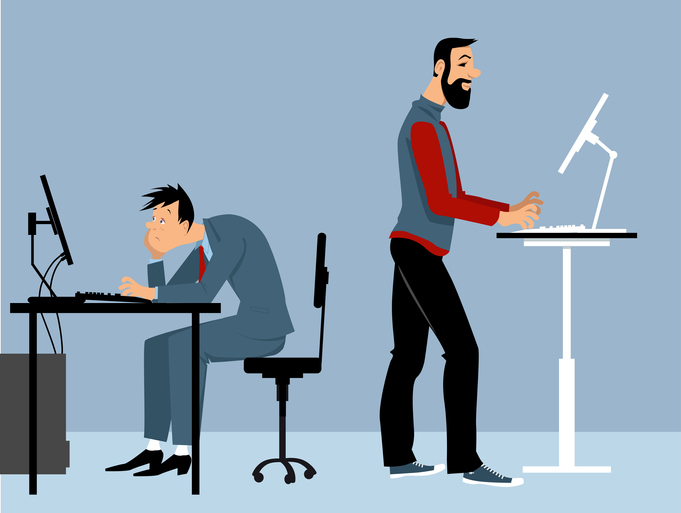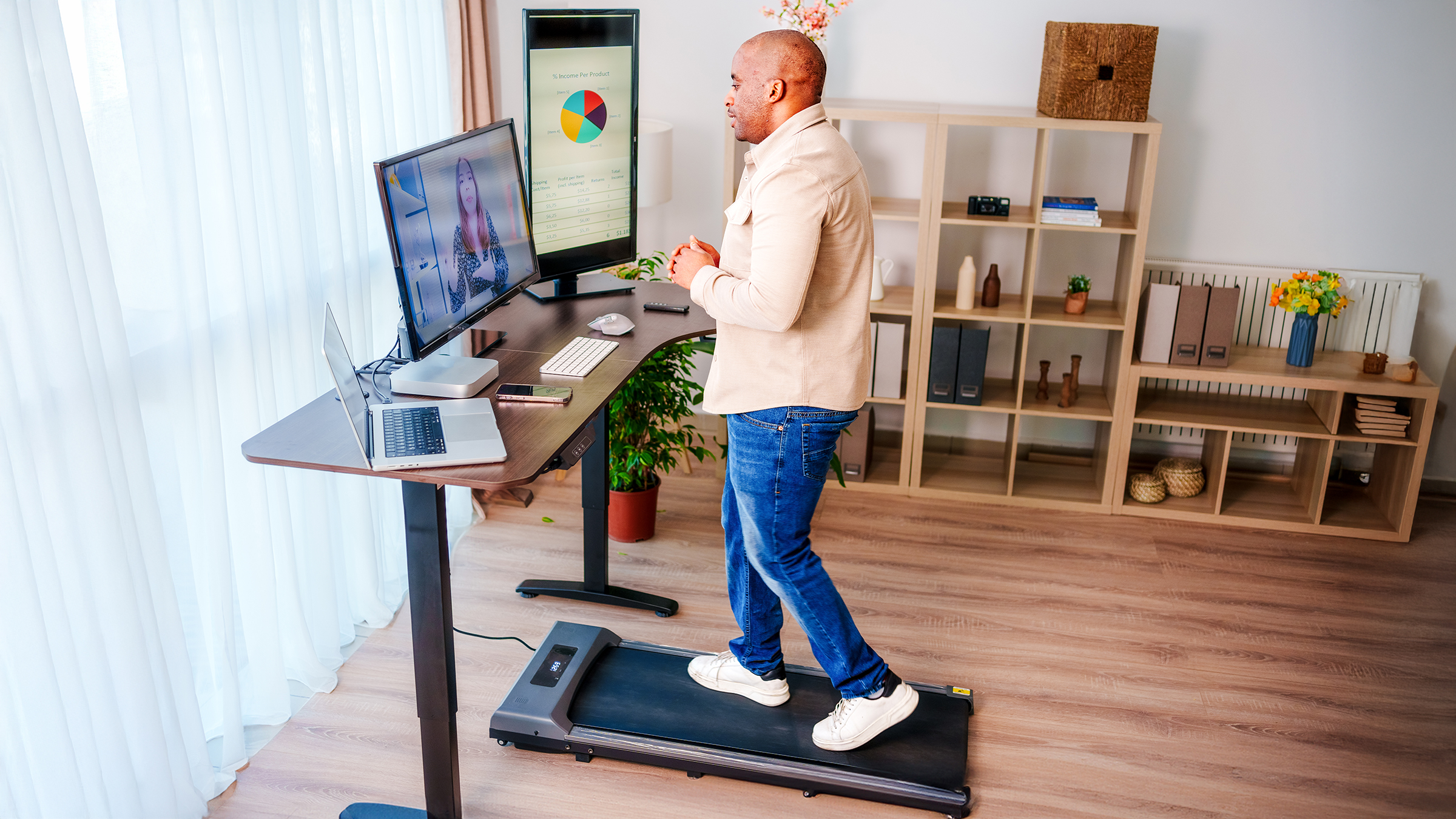
Standing vs sitting – it seems like a simple choice, but the impact on your health can be huge. In this article, we explore what prolonged sitting or standing does to your body, the risks involved, and how to strike the right balance during your workday. Whether you work in an office or from home, these insights will help you work healthier.
Sedentary Man: An Evolution in Deterioration?
Once upon a time, humans were constantly on the move: hunting, gathering, and constantly searching for food. Today, our greatest adventures are limited to finding the remote control or dodging Lego blocks on the floor. However, this sedentary lifestyle has taken its toll. Sitting for long periods of time has been linked to a number of health problems, including back pain, obesity, and an increased risk of cardiovascular disease.

Standing at work: the holy grail?
With the rise of standing desks, standing at work seems to be the solution to all our problems. Standing at work activates the muscles, improves posture and can even help burn extra calories. In addition, people who regularly stand at work often feel more energetic and productive.
But before we all throw our chairs out the door, it is important to realize that standing for long periods of time can also have disadvantages, such as tired legs and increased pressure on the joints.
The key lies in balance and build-up: instead of suddenly standing for eight hours a day, you can start with short periods of, for example, 10 minutes at a time. Set a timer or alarm as a reminder and build it up slowly. This gives your body time to get used to it and prevents unnecessary strain.
Finding the Balance
Let me share a personal story. When I first switched to a standing desk, I felt like a flamingo for the first few days: constantly switching legs, searching for comfort. After a week, I discovered that variety is key. I started alternating between periods of standing and sitting and quickly noticed an improvement in my energy and focus. By setting a timer and consciously adding short periods of standing, it became a natural routine without me having to think about it much.

The introduction of the walking pad
And then the walking pad came into the picture. For those who are not yet familiar with this device: a walking pad is a compact treadmill that you can place under your (standing) desk, allowing you to work while walking. This offers a dynamic working position and helps you to keep moving while working.
Have you ever thought about purchasing a walking pad? We have already done some research for you into what is available from budget-friendly to premium.
Conclusion: The middle ground
So, which is better: Standing vs sitting? The answer probably lies in a combination of both, supplemented with movement. Integrating aids such as a walking pad can be a valuable addition. The most important thing is to listen to your own body and find a working style that benefits both your health and your productivity.



